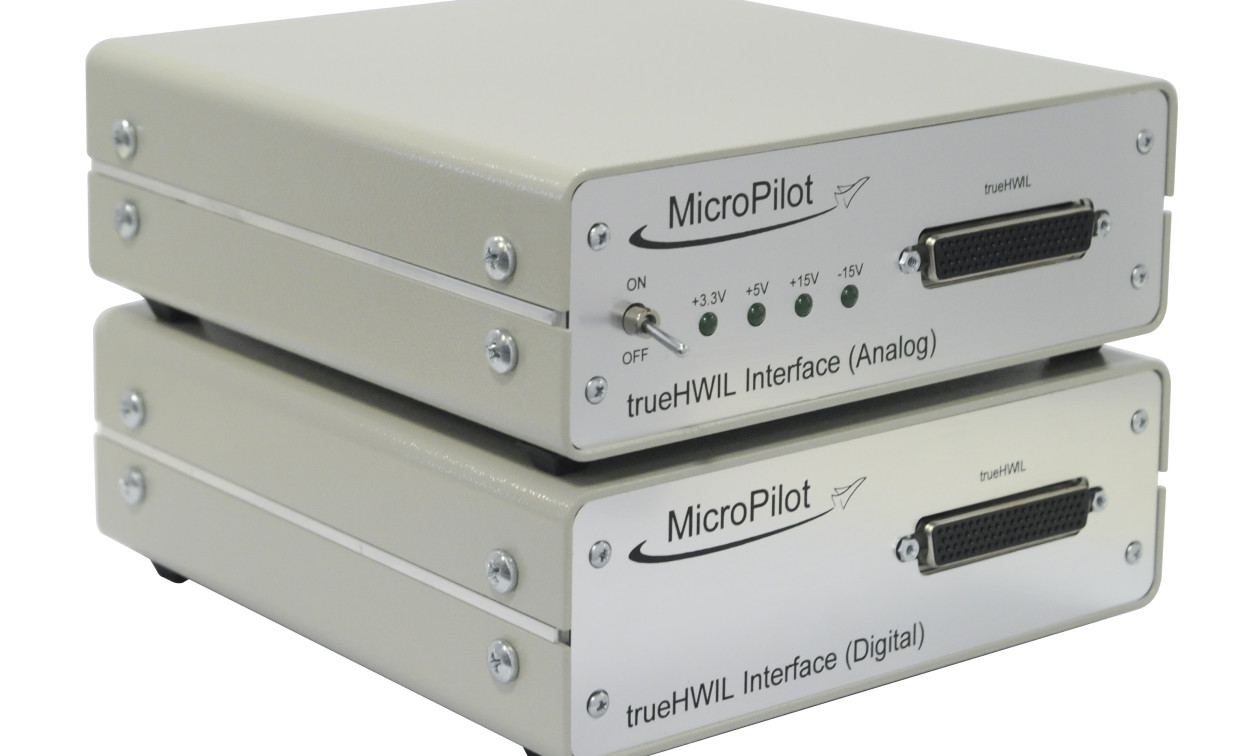UAV autopilot simulation has 3-D option
ProductJanuary 31, 2016

Aimed at unmanned aerial vehicles (UAVs), MicroPilot’s True Hardware in the Loop (trueHWIL•) offers integrators and researchers a UAV autopilot simulator.
 Aimed at unmanned aerial vehicles (UAVs), MicroPilot’s True Hardware in the Loop (trueHWIL•) offers integrators and researchers a UAV autopilot simulator. This form of simulation reads information from the serial port or CAN, introducing inaccuracies while on autopilot in-flight. It electronically simulates all sensor outputs using digital to analog converters, signal conditioning, and pulse-width modulation (PWM) interface boards enabling users to replicate the conditions of the UAVs’ experience in-flight. The company says that 3-D visualization of flights is available using third-party products, such as X-Plane. The parameters of the simulation can be monitored from a remote PC and it includes full electrical simulation of all autopilot sensors.
Aimed at unmanned aerial vehicles (UAVs), MicroPilot’s True Hardware in the Loop (trueHWIL•) offers integrators and researchers a UAV autopilot simulator. This form of simulation reads information from the serial port or CAN, introducing inaccuracies while on autopilot in-flight. It electronically simulates all sensor outputs using digital to analog converters, signal conditioning, and pulse-width modulation (PWM) interface boards enabling users to replicate the conditions of the UAVs’ experience in-flight. The company says that 3-D visualization of flights is available using third-party products, such as X-Plane. The parameters of the simulation can be monitored from a remote PC and it includes full electrical simulation of all autopilot sensors.
TrueHWIL• has the option of using MathWork’s MATLAB as a simulation and programming environment. This model is built using Simulink and MATLAB’s language programming, which is then compiled and sent to the xPC target computer with installed input and output hardware. This acquisition hardware is connected to the autopilot and reads its outputs and simulates its inputs. TrueHWIL• includes all required MATLAB libraries and block sets for fixed-wing and rotary-wing airframes. It also comes with a precompiled MATLAB simulator for users who choose not to purchase MATLAB, Simulink, or Simulink Coder.






